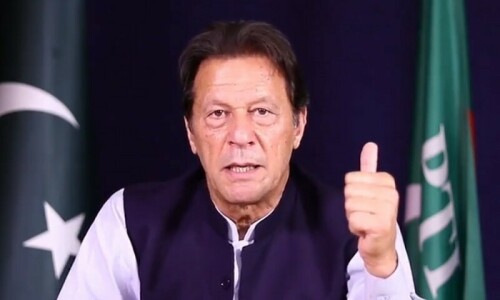KARACHI, Feb 20: The State Bank has created an additional liquidity of Rs360 billion since October 2008 for the banking system, which helped the banks to face the impact of global liquidity crisis.
State Bank Governor Syed Salim Raza while addressing the meeting of the Private Sector Credit Advisory Council (PSCAC) held at the State Bank on Friday said the central bank had taken several measures to create additional liquidity that eased the liquidity crunch in the banking system.
To ease tight liquidity conditions arising from extraordinary outflows from the banking system during October 2008, the State Bank took a series of measures, including liquidity injection through OMOs, reduction in cash reserve requirement, exemption of time deposits (i.e. deposits of above one-year tenor) from statutory liquidity requirement, enhancement of list of eligible securities for SLR and provision of 100 per cent refinance to banks against Export Finance Scheme.
“These measures helped pump in direct and indirect liquidity of around Rs360 billion in the banking system at present, compared with just Rs79 billion in September 2008,” he said. Mr Raza said sufficient liquidity was available in the banking system and urged upon the commercial banks to increase lending to productive sectors of the economy, which will help the country to stage a quick economic recovery.
Earlier, the State Bank has been discouraging higher private sector borrowing to ease the rising inflationary pressure on the economy. The cost of funds had gone much higher after increasing the policy interest rate to 15 per cent and this was the major barricade in the way of liquidity flows towards the private sector. The governor expressed concern that the private sector credit, after recording an average growth of 19 per cent during 2006-08, witnessed deceleration in the first seven months of the current fiscal 2008-09 mainly due to slowdown in the economic activity coupled with global recession.
The SBP governor told the participants that the weak demand, high mark-up rates, rising non-performing loans and liquidity constraints are some of the important factors behind decelearation in private sector credit disbursement.
He said overall credit disbursement to the private sector expanded by Rs158.4 billion during July 2008 to Jan 2009 and recorded a growth of 5.5 per cent compared to Rs 260.3 billion or 10.5 per cent last year. On annualised basis, however, growth is 11.2 per cent, which is lower than 17 per cent last year, he added.
During financial year (FY09) private sector credit expanded substantially till October 2008 as private sector availed credit of Rs125.6 billion during the period July-November 2008 compared to Rs 60.5 billion in the same period last year. Thereafter, the credit- take-off started to decelerate and it increased by only Rs32.8 billion during November 2008 - January 2009 as compared with Rs 199.8 billion in corresponding period last year.
The credit disbursement to the agriculture sector through banking system in first half of FY09 remained at Rs99.4 billion, up 10 per cent over the disbursement of Rs90.3 billion in the same period last year, against an annual target of Rs250 billion.
However, the credit disbursement to SMEs has declined to Rs372.1 billion from Rs433.2 billion as of December, 2007. Out of which, around 75 per cent was for working capital, 17 per cent for fixed investments, while 8 per cent extended for other finances.
The highest share of SME credit was obtained by manufacturing sector at 40 per cent followed by commerce trade 33 per cent, real estate and rentals 8 per cent and other private business 5 per cent as of December 2008. Similarly, consumer loans have also declined to Rs326.1 billion as of December 2008 from Rs 353.8 billion as of June 2008. Within consumer finance, highest share is of personal loan at 40 per cent followed by car finance 28 per cent, housing finance 20 per cent and credit cards 12 per cent as of end December 2008.
Financing and investment portfolio of Islamic banks reached Rs185 billion in December 2008 compared with Rs137.6 billion in December 2007. Market share of Islamic banks in overall banking has been increased to 5 per cent at end December 2008 compared with 4 per cent at end December 2007, he added.
Aftab Manzoor, Chairman Pakistan Banks’ Association gave a presentation on ‘Corporate Lending – Issues and Trends’. He said that the banking sector has changed substantially over the last 9-15 months due to new challenges being faced by the industry and added that increase in lending rates is primarily due to high cost of funds and weak cash flows of the borrowers. He said that the banks were adopting more objective lending criteria with focus on cash flows and emphasis on debt servicing ability of the borrower.













































Dear visitor, the comments section is undergoing an overhaul and will return soon.